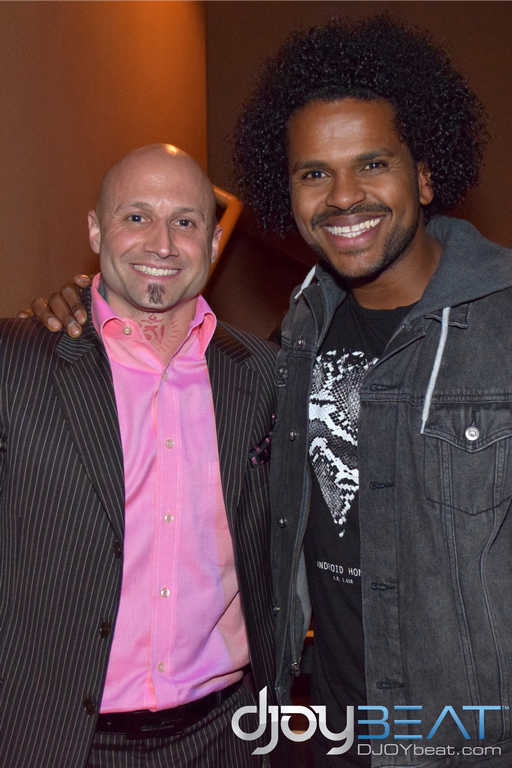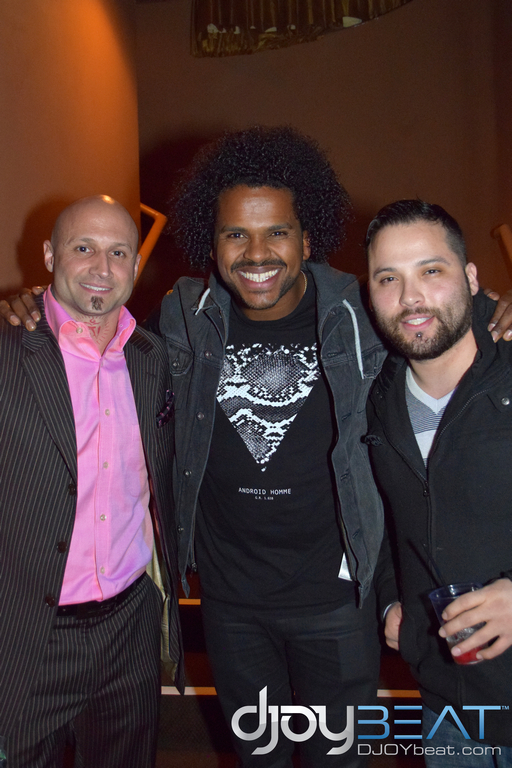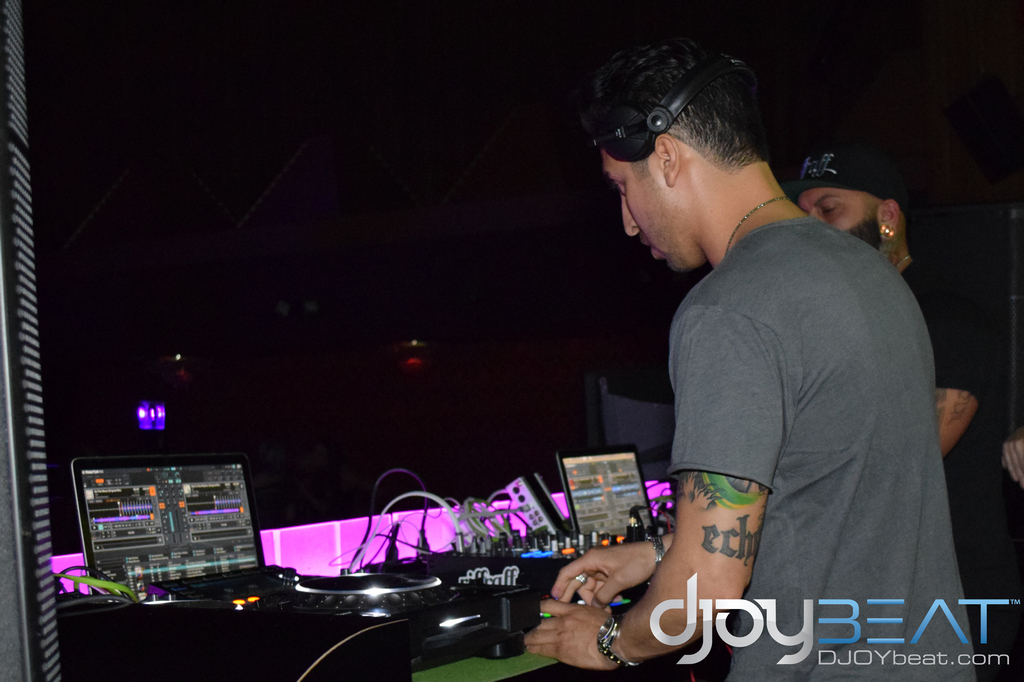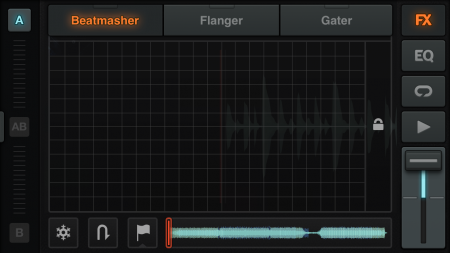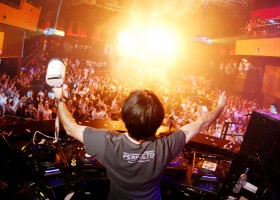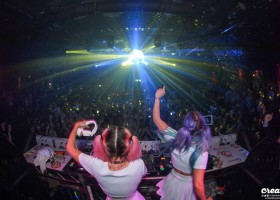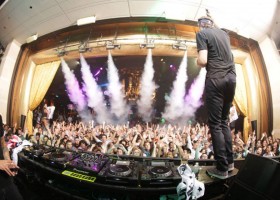The Las Vegas underground was ready to dig into some deeper sounds and packed the house at After for a special 5-hour set by DJ/producer Max Graham. Check out the after movie (no pun intended)!
Photo Gallery: After Las Vegas with Max Graham
The Las Vegas underground was ready to dig into some deeper sounds and packed the house at After for a special 5-hour set by DJ/producer Max Graham. Click on the gallery below to view pics from the party!
After Las Vegas with Max Graham Photo Gallery
Max Graham headlines at After Las Vegas with a special 5-hour set on February 22, 2014.Photos by Linsie McNamee
Tech Review: Traktor DJ for iOS
The Traktor DJ app for iOS is the most powerful DJ application on the planet. It gives users the ability to DJ their iTunes music library using most the features found in the Native Instruments Traktor Pro program on both OSX and PC. From the sync button to the various FX (effects), the Traktor App puts more power at your fingertips than any other DJ app on the market.
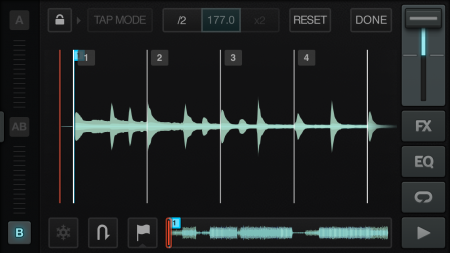
Beat Matching Grid Mode – In this window, users can match the beat of their music to the overall global tempo.
The interface of Traktor DJ is very user-friendly and for a user of Traktor Pro. I had no difficulty navigating the interface, though if I had never used Traktor on my computer, I might have wanted to read directions on how to operate the software. Upon first use of Traktor DJ, I found a few bugs, which were quickly resolved in a day by the hard working Native Instruments team.
One of the main benefits of Traktor DJ is the FX section. Native Instruments included 8 of the most commonly used FX found in Traktor Pro, and have imported them into the app. One main benefits the app boasts over Traktor Pro is the use of the touch based X/Y pad used to control the FX section. This gives the user the power to control both the depth and the time of the FX used with the touch of a finger. I expect to see this idea become the standard for controlling touch-based effects in other competing apps.
Another major plus about the Traktor DJ app is its integration with the Native Instruments hardware. NI recently released the Z1 mixer, which is used as a hardware controller/mixer for the Traktor DJ app. In addition, they have also released the Traktor DJ Cable, which allows you to cue your music in your headphones, and allows you to play your master output to the crowd. It seems that Native Instruments has thought of it all!
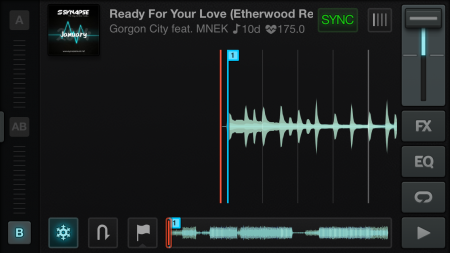
Player Interface – This is the general layout of the Traktor DJ app. From this screen, you can navigate playlists, activate FX and crossfader control.
One drawback I have found is in the analyzing and preparation of songs. When analyzing songs, it sometimes gets the BPM wrong. This can be remedied by using the /2 and x2 buttons in the preparation section. In addition, I have found that trying to operate the program on an iPhone can be a bit cumbersome. To use this playing out, I would definitely use an iPad, which would allow much more room for navigation.
Album Review: Gareth Emery’s “Drive”
Strap in for some epic sounds because Gareth Emery has constructed a damn fine LP. The DJ/producer who played some of the best sets I heard in Las Vegas last year continues waking up electronic music fans on Drive.
Launching into a festival-worthy banger on “Entrada,” Emery has created a polished journey through the 12-track album that’s brilliantly produced with lush layers of composition (I didn’t even mind the builds and drops as much when they rev into gear). Walking the line between trance and house, the album’s warm and uplifting melodies awash the listener throughout.
Christina Novelli (yup, the same singer from his hit “Concrete Angel”) joins Emery again on “Dynamite.” Bo Bruce (a finalist from the U.K. version of The Voice) is featured on the first single “U” and Emery also teams up with his sister, Roxanne, on “Soldier.” But the big collaboration EDM fans will recognize is with Krewella on “Lights & Thunder,” a track gives the trio a cleaner, less glitchy big-room sound. There are a few unfamiliar faces as well, with Emery adding new vocal collaborators and producers to the Drive liner notes.
Emery’s musicianship shines through with fuller, more complex sounds than what is dominating the club scene as of late. Favorites from the album include “U,” “Beautiful Rage,” “Long Way Home” (a track perfect for winding down the album or even a set), and “Firebird.”
Drive will be released April 1 on Emery’s Garuda label. ★★★✩✩
Follow @DeannaRilling for her latest veteran musings on the electronic music scene.
The Original Superstar DJ: Catching Up with Keoki
Legions of ravers may know the name Superstar DJ Keoki from the portrayal of him in the movie Party Monster. But in case you don’t know (or haven’t seen the movie—bad raver!), Keoki Franconi is a legendary OG who has been in the game since the Disco 2000 parties at Limelight in New York City (watch the documentary on that, too). DJOYbeat caught up with Keoki while he worked on new productions to chat about his recent nightclub venture in Houston, his infamous career, notorious club kid Michael Alig’s release from prison, and assless chaps.
The big news right now is you’ve opened a new afterhours in Houston, Texas. How did that come about?
A friend of mine I’ve known for about 10 years owned a club called Via. In October, his partner had to drop out, so he was left by himself and was looking at maybe having to close the club. I came out to play for him in November and saw what was happening. He really didn’t consider that I might want to be a part of it, but I saw an opportunity, offered my help and he accepted. We became partners in the club, helped him revamp it a bit with more sound and lights and reopened in January. It’s an underground afterhours club and it’s centered around music. We’ve had Frankie Bones, we have Charles Feelgood coming up, Nigel Richards, The Crystal Method and Pig&Dan. We want to put Houston on the map for that.
Will you be spinning there, too?
I’m there almost every day. I’ve never owned a club before, but I’ve been in nightclubs for about 28 years. I know the cool clubs always have cool owners and I’m hoping our club is gonna be cool. I try to make an impact with the music more than anything, but I’m trying to be hands-on with everything at the club and be a part of it. I play almost every night—I either open or close—and I play Friday nights.
For newer clubbers that don’t know much about the history of the scene, how would you describe your career evolution?
Music’s always been a part of my life; music’s always been the only thing that saved me from everything else and the only thing that’s never let me down. The club that I first started going to in New York that was afterhours was called Save the Robots. Via is almost an exact copy of what that club was like in the underground, very selective at the door, has the most cutting-edge music and the coolest people in it. It was really not about making money, it was more about having a really cool party. That’s kind of what I’m bringing to Via.
What do you think about the direction clubbing culture has taken in recent years in America?
Dance music culture has gone nowhere. It’s a shame. You go to any event –I went to Ultra last year—and I was disgusted. Everybody is fist-pumping in the air and it’s all noise pretty much. There was no dancing, there was no rhythm—any rhythm that I found or heard was rip-offs from the ’80s or mashups or whatever and it was such a letdown, really. … I always say that I’ll stop DJing and making music when I find that this isn’t exciting anymore to me. But there’s so much good music out there and there’s so many talented people that isn’t getting through because of the American music machine. … The ones that want to put the work in and have been around, the veterans who have done the work who have been there and aren’t jaded or haven’t given up need to do something about it. That’s what I’m trying to do. I feel like it’s my job to do it.
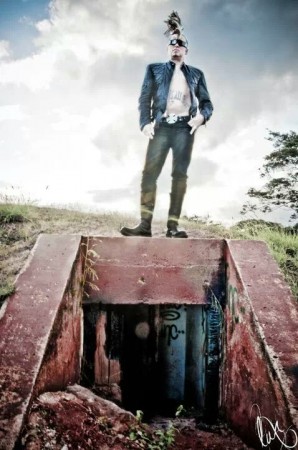
To what can you contribute to your longevity in the industry?
I never really sold out [laughs]! There was a couple of times I wanted to give up DJing, then something would happen and I’d find the music that I like. One example is the electroclash movement. I previously went into any record store to buy records and I’d be like, “Okay, give me one of each of the top 10,” buy those records, go to the next gig without even listening to the records, I’d play them, I’d get paid and it’d be awesome—supposedly. But I wasn’t feeling awesome. I thought it was wack. Then I found a really cool record called “Space Invaders Are Smoking Grass.” So I started looking for more records like that and then I’d go to the record store and spend a few hours there and only come out with three or four records. It got me into music again. That kind of died off and I got into dark, minimal house music. It always goes back to house and techno.
Since you’re technically the original superstar DJ, what do you think about these DJ/producers touted as “Superstar DJs” today?
They get paid a lot better [laughs]! Their megaphones are loud, but I’m not sure if they’re really ready to say anything into those megaphones. For me, I’ve always felt like if I opened my mouth to say anything, people would listen, it’s like a megaphone. I’m not sure that any of these artists—I don’t want to name any one of them specifically—but I’m not sure any one of them understands how much power that is or how much of a responsibility that can be or how much they can do with it. It’s almost like they just sit back and collect the money, do their gigs, and not really anything is coming back.
What’s been the most memorable moment in your career?
I’d have to say Disco 2000 in New York City where it all started for me. It seems like such a short time, six years DJing at this place every Wednesday. No matter what, I was there. I really didn’t get paid anything the way it worked out with the budget Michael Alig had, but I was loving every moment of it and it was not for any other reason than I love the music and being there.
To go off of that, what do you think about Disco 2000’s former home, Limelight, being turned into an IHOP?
[Laughs.] I think it’s funny. What can I say? It’s just a building, but the memories are there. I did go there when I was in New York a few years ago and it was a mall. I walked through it and it was kind of funny. But for the most part, it’s just a building. … Your memories are what you have; your connections and people you know in your life are the most important things.
Speaking of memories and people you know, Michael Alig (who went to prison for the murder of club kid Andre “Angel” Melendez) may be granted parole this year. Do you have any thoughts on that?
I think it’s great. I used to cringe when people asked me what I thought about Michael with him being in jail and all that; I didn’t know what to say. But I’ve been able to come to terms with that. Michael was the most incredible person I ever met. And he also did the most fucked-up things I’ve ever experienced in my life. So for him to have lived through it and spend his time in jail and all that? I’m happy for him, to be honest. I’m happy that he’s getting out, I’m happy he’s alive and I’m happy he seems to have the same spirit. He’s still funny and he tweets his little comments every now and then and I respond to him. It seems to be he’s in the same kind of humor and spirits he was in way back when. I’m hoping that everything goes well for him.
What’s the best outfit you’ve ever worn for a gig? There was that assless chaps phase.
[Laughs.] I think it would have to be my assless chaps. Every time I came to Texas I would wear the assless chaps as a joke. “My ass is out in where the president is from!” I’d have to say those were probably the most fun.
Follow @DeannaRilling on Twitter for her veteran musings on electronic music.
Oakenfold Recreates Trance Classic “Café Del Mar”
Trance isn’t dead, it’s just hiding in Europe somewhere. And many of the big producers that used to make it have… well… they don’t admit that’s what got them into this whole game in the first place (remember “DJ Tiësto”?). While the big-room EDM sound dominates clubs in the United States, the #TranceFamily keeps fighting the good fight (while worshiping Armin, of course).
But one OG is bringing back the beats that made him big, our DJ godfather Paul Oakenfold. (If you don’t know who Oakenfold is, just go play in traffic now, there’s no point in reading the rest of this). His Trance Mission album due out this spring will highlight 10 covers of his favorite trance tunes of all time.
Pushing the Perfecto Fluoro direction of his sound as of late, Oakenfold seems to be one of the few veterans not shying away from what made him renowned. “Fluoro: I’ve always been a fan of, I enjoy it, it’s very melodic, but very cutting edge,” Oakenfold said when I chatted with him last April. “I don’t tend to play Fluoro sets in America. … I haven’t really found a club in America where I can play Fluoro. It’s a real late-night/after-hours sound.”
The first single from the Perfecto Fluoro-released album will be Oakie’s take on the Energy 52 mega-trance classic “Café Del Mar.” (You’ll know it when you hear it—it had that video with the dude carrying the briefcase looking all over for something or someone—remember it now? Watch it below.) Anyways, it’s arguably one of the biggest trance records, like, ever. Not only has Oakenfold put his twist on the track, trance producers Activa, Angry Man and Peetu S will drop their versions of “Café Del Mar” on March 10 as well. So prepare to get your rave on—or educate yourself a bit more on the history of the genre, with a modern edge.
Follow @DeannaRilling on Twitter for her veteran musings on electronic music.
- « Previous Page
- 1
- 2
- 3
- 4
- …
- 12
- Next Page »

